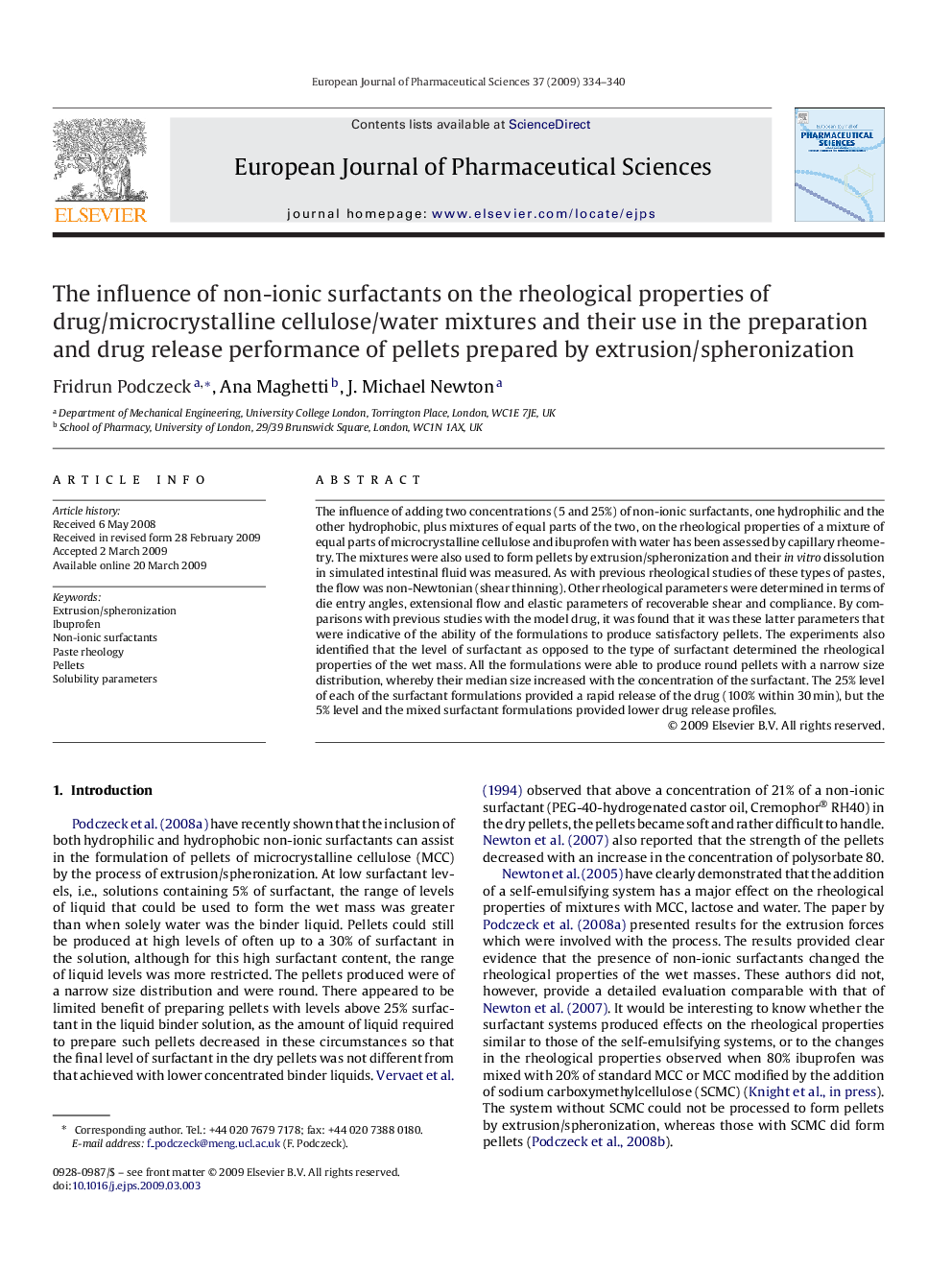| کد مقاله | کد نشریه | سال انتشار | مقاله انگلیسی | نسخه تمام متن |
|---|---|---|---|---|
| 2481689 | 1556258 | 2009 | 7 صفحه PDF | دانلود رایگان |

The influence of adding two concentrations (5 and 25%) of non-ionic surfactants, one hydrophilic and the other hydrophobic, plus mixtures of equal parts of the two, on the rheological properties of a mixture of equal parts of microcrystalline cellulose and ibuprofen with water has been assessed by capillary rheometry. The mixtures were also used to form pellets by extrusion/spheronization and their in vitro dissolution in simulated intestinal fluid was measured. As with previous rheological studies of these types of pastes, the flow was non-Newtonian (shear thinning). Other rheological parameters were determined in terms of die entry angles, extensional flow and elastic parameters of recoverable shear and compliance. By comparisons with previous studies with the model drug, it was found that it was these latter parameters that were indicative of the ability of the formulations to produce satisfactory pellets. The experiments also identified that the level of surfactant as opposed to the type of surfactant determined the rheological properties of the wet mass. All the formulations were able to produce round pellets with a narrow size distribution, whereby their median size increased with the concentration of the surfactant. The 25% level of each of the surfactant formulations provided a rapid release of the drug (100% within 30 min), but the 5% level and the mixed surfactant formulations provided lower drug release profiles.
Journal: European Journal of Pharmaceutical Sciences - Volume 37, Issues 3–4, 28 June 2009, Pages 334–340